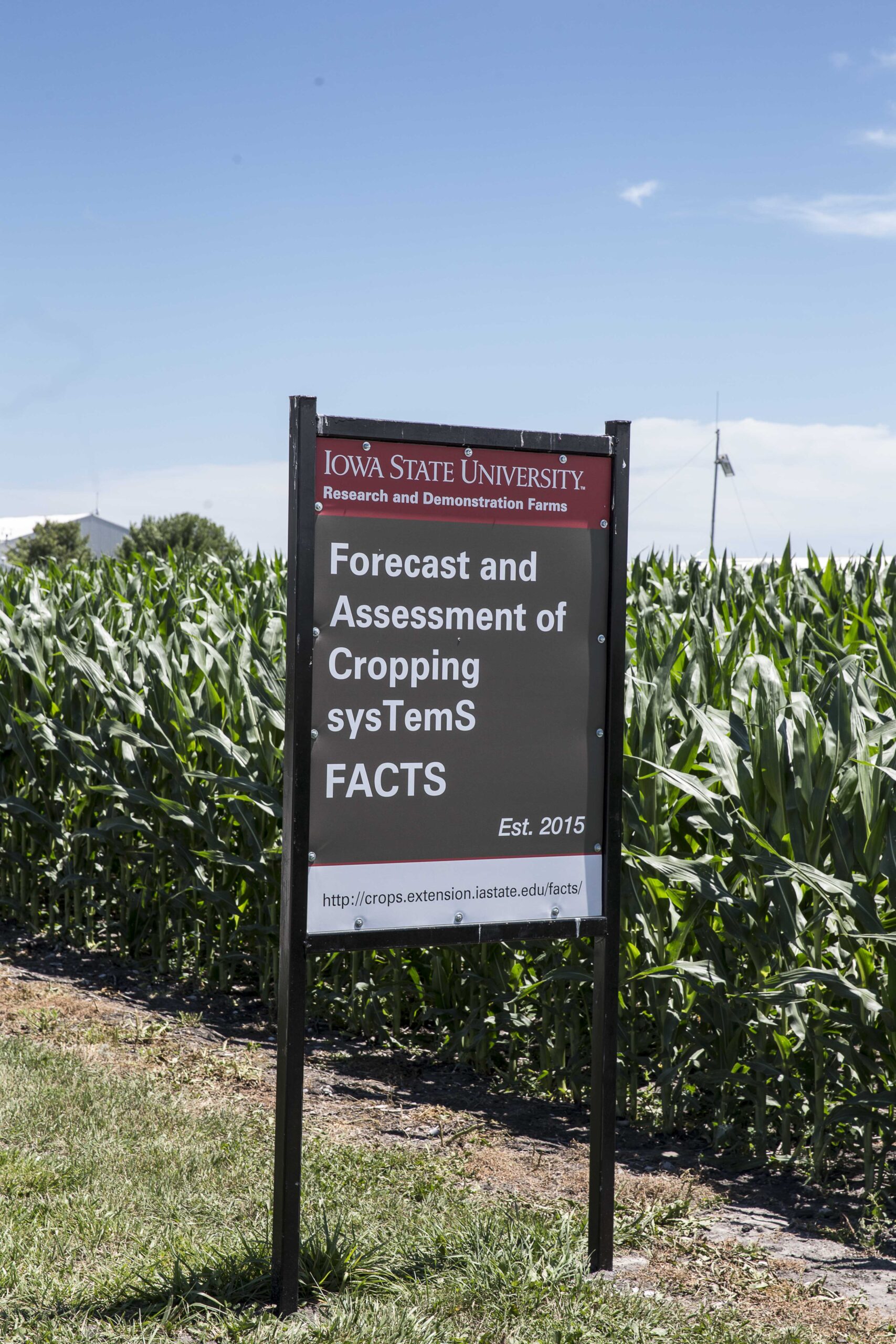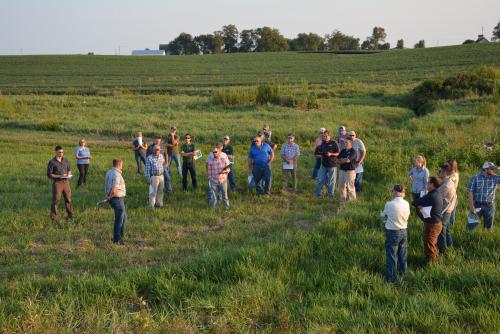FACTS is an ongoing project developed to forecast and evaluate real-time soil-crop dynamics in specific ISU fields. Predictions and measurements will be frequently updated as new information becomes available during the growing season.
What we do:
- During the growing season we provide real-time measurements and forecasts for weather, soil water and nitrogen, crop water and nitrogen, yield predictions, crop stage and heat/frost stress.
- Before/after the growing season we benchmark production, economic, and environmental performance, estimate the yield gaps, and perform what-if scenario analysis to identify management practices with the highest profits and lowest environmental impacts.
Why we do it:
- To provide quantitative answers to questions that farmers commonly ask such as what is going to be the yield this year, how much nitrogen is in the soil today, do I have enough soil water for the next few days, what if I had used more nitrogen, planted more seeds, gotten more rain.
- To improve the science behind predictive tools, ground-truth predictions, and explore different approaches to accurately forecasting yields.

